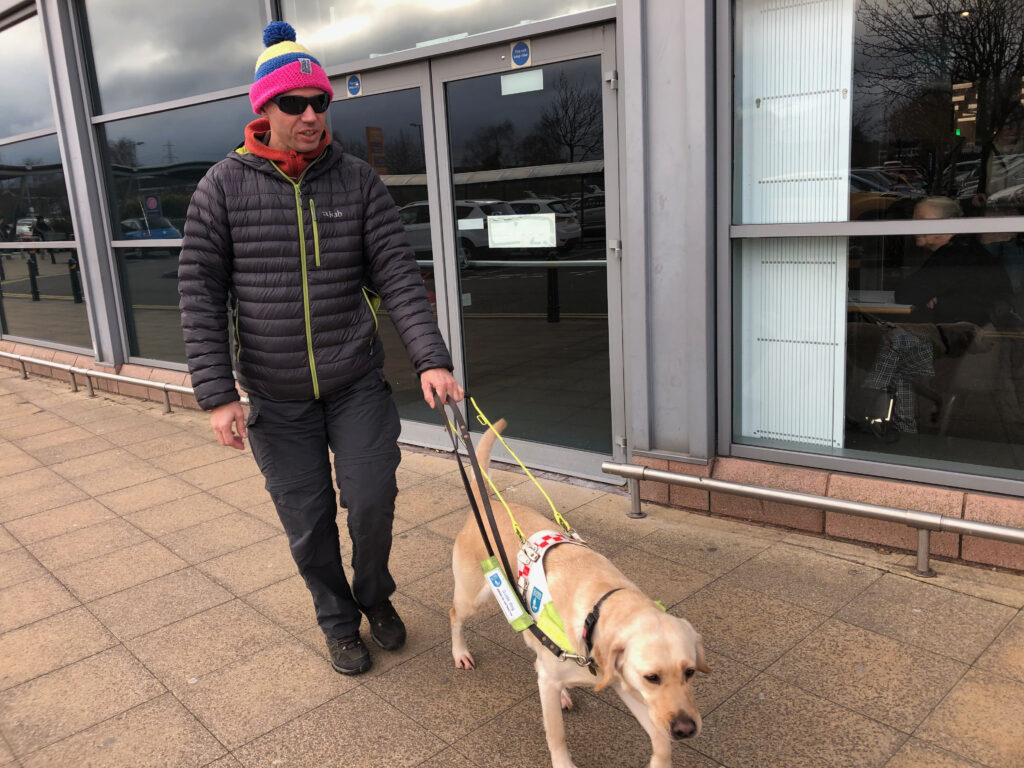Contents
Many people with a visual impairment will use a cane or a guide dog to get around safely. There are a few different types and we’re going to explain how you can recognise them and what any special markings may mean.
Not everybody with a visual impairment will use a cane, guide dog or person to get around. It doesn’t mean they aren’t visually impaired. They probably have enough useful vision to move around independently or or know their surroundings well. Like many blind people, John can get around his house without using his cane or guide dog. He may still walk into things now and then, but it’s something that comes with the territory.
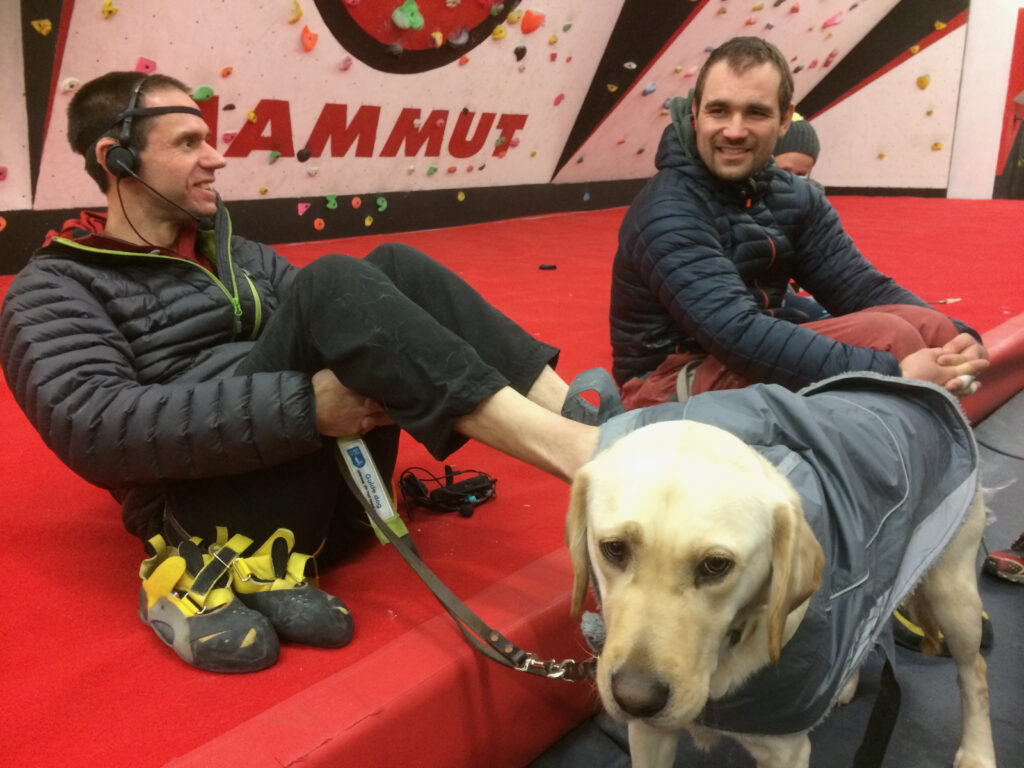
Recognising canes

A symbol cane is a short cane that is used to show others that they have a visual impairment

Long or guide canes can be used to find obstacles or navigating.
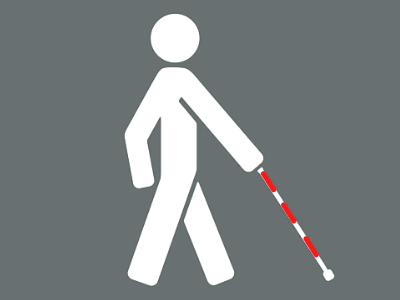
Red and white striped canes indicate combined sight and hearing loss (Deafblind).
It’s possible to get canes in a wide range of colours and some people choose to have a cane in their favourite colour rather than in the traditional white.
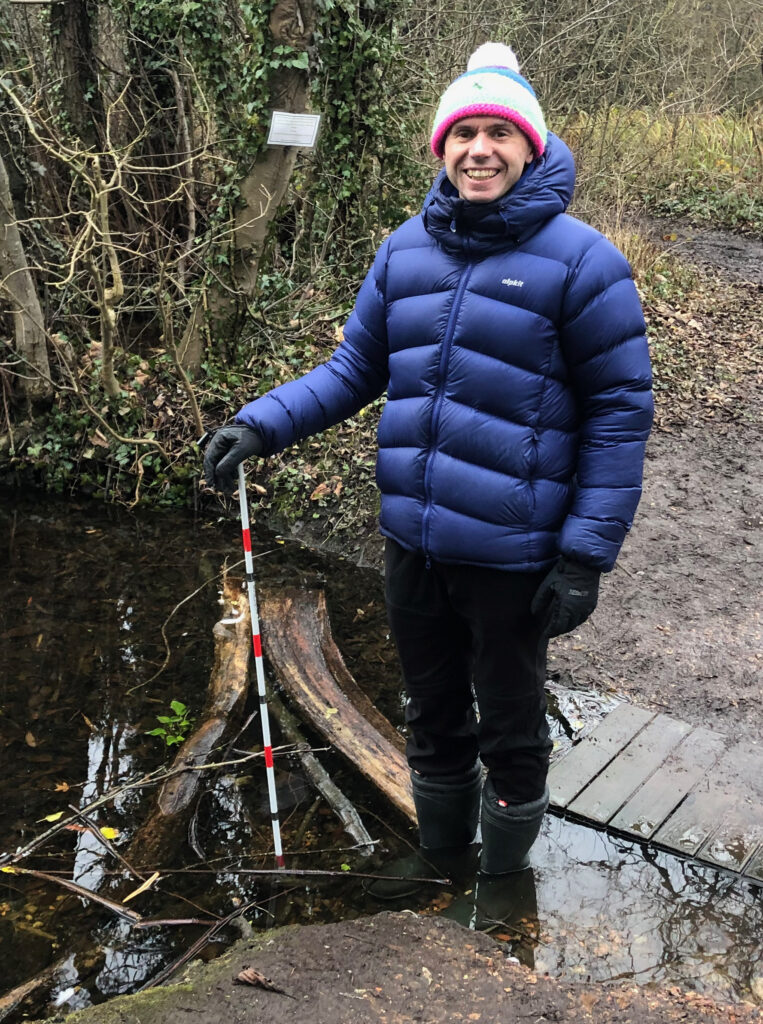
Guide Dogs
Guide dogs can also have different coloured markings in the same way as canes. A working guide dog will wear a harness while it is on duty. A guide dog with it’s harness off is generally off duty. This would be the best time to ask the owner to pet the dog if you wanted to.
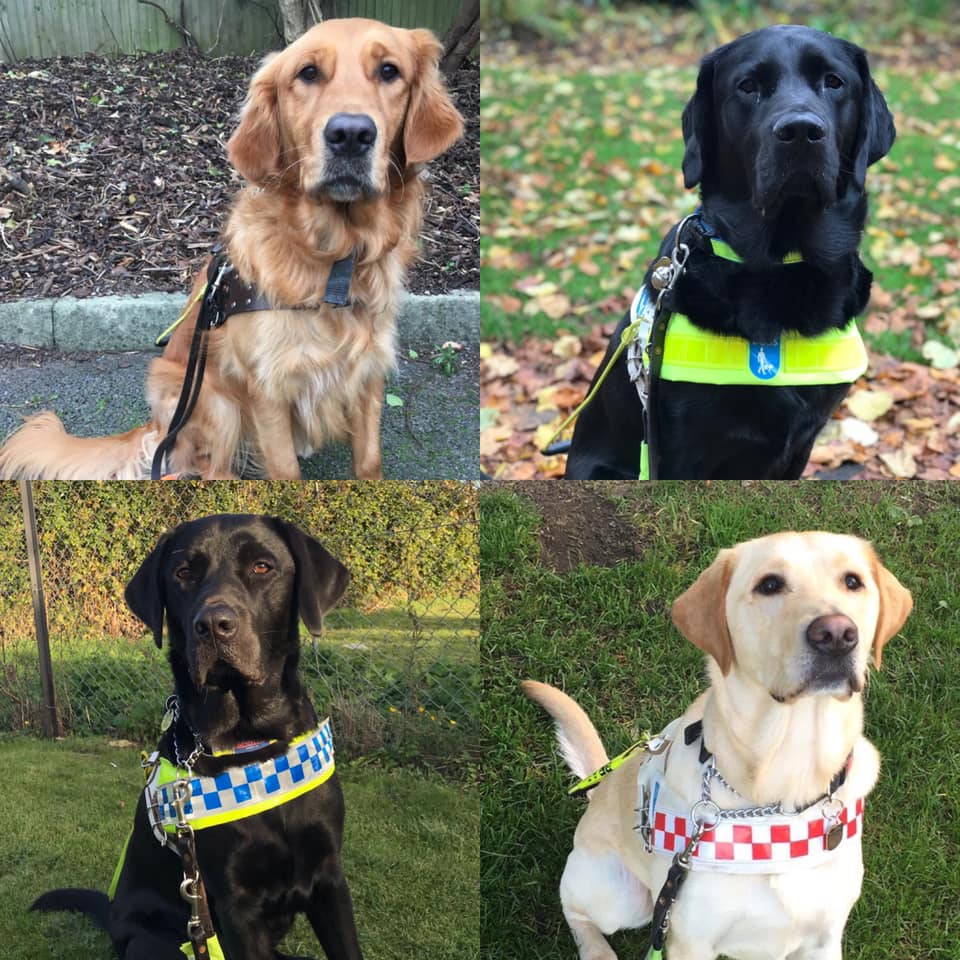
- Brown harness = a guide dog in training
- White harness + high visibility yellow across the chest = a qualified working guide dog with a blind or visually impaired owner
- A White harness + high visibility blue and white chequered squares across the chest = a dual trained working guide dog and seizure alert dog
- White harness + high visibility red and white chequered squares across the chest and/or back = a qualified working guide dog with a blind or visually impaired owner who also has a degree of hearing loss
- A dark green harness + high visibility yellow across the chest = a qualified working guide dog trained by the seeing dog alliance with a blind or visually impaired owner
Some guide dogs are owner trained and may have different harnesses or symbols but should still be recognisable.
Always ask the owner before petting any guide or assistance dog.
Many owners will prefer their dog isn’t petted while working. This is to keep the boundary between work and play clear. It’s nothing to take personally.
